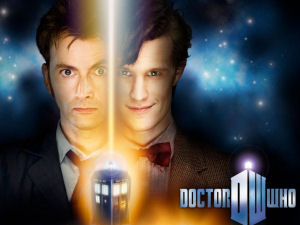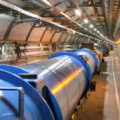
Experimental observations of sub-atomic particles known as Kaons and B Mesons have revealed significant differences in how their matter and anti-matter versions decay. This “Charge Parity violation” is an awkward anomaly for physicists but a new theory suggests that the rotation of our galaxy may explain the discrepancy.
When CP violation has been observed in the decay of B-Mesons the key difference observed between the break-up of matter and antimatter versions of the same particle is variation in the different decay rates. Curiously, even though researchers observe a wide variation in the pattern of decay rates, when those individual decay rates are added together they add up to the same total for both matter and antimatter versions of the same particle.
Dr Mark Hadley, the University of Warwick physicist behind the new theory, says it explains this puzzle while leaving the door open to the related conundrum of why different amounts of matter and antimatter exist in the Universe. “Researchers have neglected the significant impact of the rotation of our galaxy on the pattern of how sub atomic particles breakdown,” he contends.
Dr Hadley’s paper, appearing in EPL, explains how the speed and angular momentum of a massive spinning body such as the Milky Way galaxy creates “frame dragging” on its local space and time; twisting the shape of that space time and creating time dilation effects.
Dr Hadley believes that although the matter and antimatter versions of the sub-atomic particles begin as an exact mirror image of each other, the galactic frame dragging effect is significant enough to cause the different structures in each particle to experience different levels of time dilation and therefore decay in different ways. However, the overall variation of the different levels of time dilation averages out when every particle in the decay is taken into account and CP violation disappears and parity is conserved.
The theory directly addresses how galactic scale frame dragging could explain experimental observations of CP violation, but it also leaves open the door to those theorists who believe CP violation could explain the apparent predominance of matter in the universe. The universe’s earliest structures, muses Dr Hadley, may have had sufficient mass and spin to generate frame dragging effects that could have had a significant effect on the distribution of matter and antimatter.
Related:
New insight into matter-antimatter conundrum
Antimatter bottled-up for 16 minutes
Experimental results hint at neutrino flavor change
Satellite catches thunderstorm producing antimatter bursts








Comments are closed.